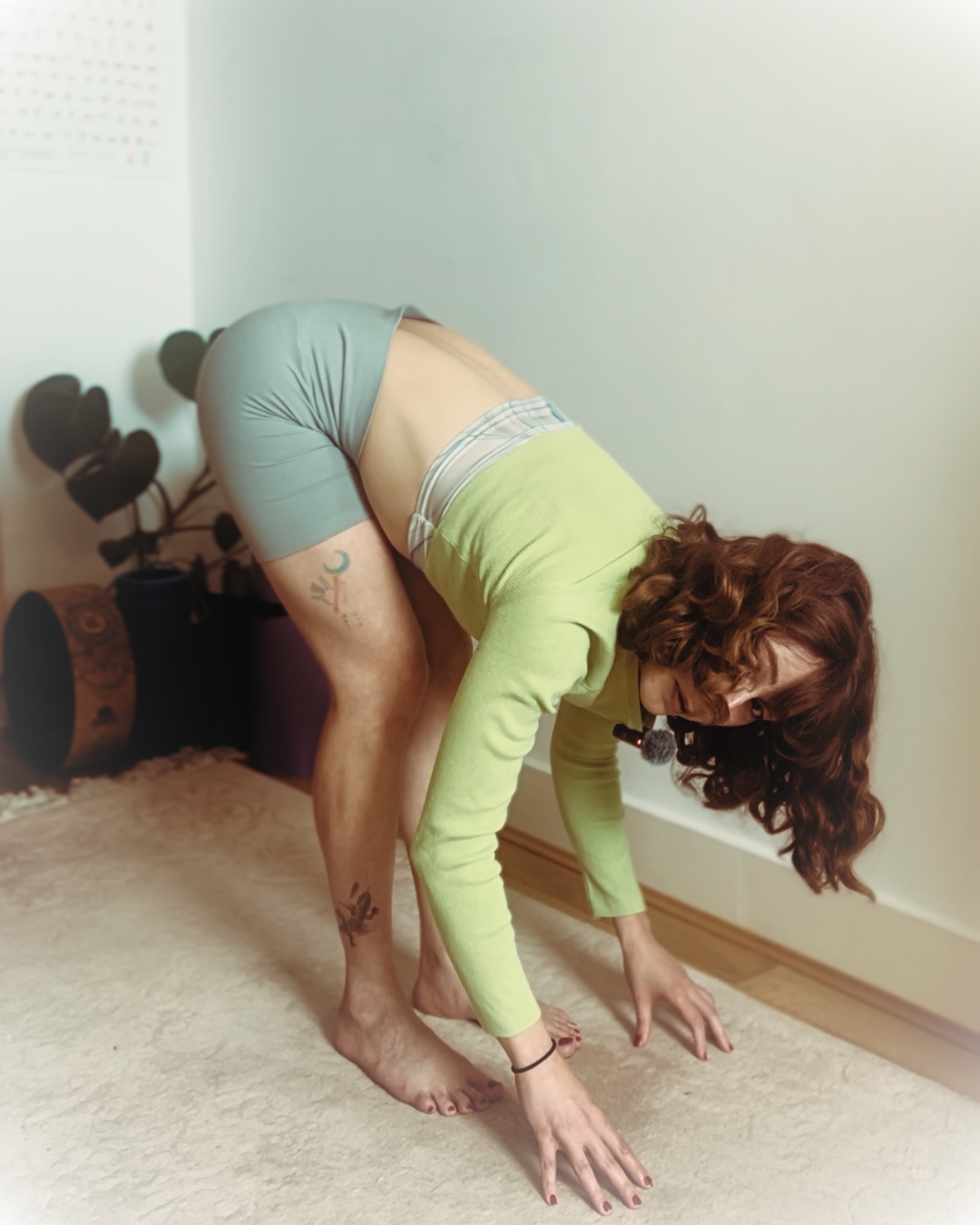A Vinyasa yoga class without Uttanasana (standing forward fold) is almost impossible. Sun Salutations? It’s there. A creative back-body opening flow? It’s there.
At first glance, the pose looks simple. I’m just bending forward, right? But here’s the catch: Uttanasana is often treated like a “floor or fail” pose. If your hands don’t touch the ground with straight legs, you feel like you’re doing it wrong. And this, my friends, is where everything goes sideways. Let’s break it down.
Where Do People Go Wrong?

Picture this: You’re standing tall in Tadasana (mountain pose). You inhale, sweep your arms up, spine beautifully long. Then you start folding forward. But instead of keeping that length, the focus shifts to one thing: getting your hands on the ground.
If your hamstrings are tight and you lock out the legs to reach the floor, the spine has no choice but to round. The shoulders creep up toward the ears. Instead of elongation, you end up with compression. From the outside, it might look like a forward fold, but inside? Your spine is screaming, “This isn’t what I signed up for!”
So the first mistake is thinking: straight legs = success. That mindset turns Uttanasana into a battle between hamstrings and ego. And the spine loses every time.
What Is the Correct Alignment?

Uttanasana isn’t about touching your toes. It’s about creating space and length along the entire back body — from the crown of the head, down the spine, through the hamstrings, and all the way to the heels.
Here’s how to set it up:
- Start in Tadasana, arms reaching overhead to lengthen the spine.
- As you fold forward, hinge at the hips (not the waist) and keep that spinal elongation alive.
- Bend your knees. Yes, bend them! This allows the pelvis to tilt forward and the spine to stay long instead of collapsing.
- Let the chest move toward the thighs rather than forcing the hands to the floor.
- Keep shoulders drawing down the back, away from the ears, so the neck stays soft.
- Hands can rest on the mat, shins, or — my personal favorite — blocks.
Think of it this way: the spine is the star of the pose, and the hamstrings are the supporting cast. If the star isn’t shining, the whole play falls apart.
How Can We Improve?

Improving your forward fold isn’t about pushing harder; it’s about practicing smarter. Here are some ways to make Uttanasana work for your body:
- Use Props Blocks under the hands bring the floor closer to you. This makes it easier to keep the spine long and shoulders relaxed. Far from being “cheating,” props are a way to honor your anatomy and still experience the essence of the pose.
- Micro-bend or Deep Bend Play with how much you bend the knees. A deep bend lets you bring the chest closer to the thighs, which teaches the body the feeling of spinal elongation without the hamstrings taking over. Over time, as flexibility improves, you can reduce the bend - but it’s never about straight legs for the sake of straight legs.
- Engage the Quads A little anatomy bonus: when you engage your quadriceps (front thighs), you encourage the hamstrings to release. This reciprocal action helps the back of the legs gradually open without strain.
- Breathe into the Back Body Don’t just hang out in the pose. With each inhale, imagine your spine lengthening, the ribs expanding. With each exhale, allow the torso to melt a bit closer to the thighs without forcing. This mindful breathwork transforms the pose from a stretch into a moving meditation.
- Consistency over Depth Like every asana, progress in Uttanasana comes with consistent practice. A few mindful forward folds in each practice will serve you far better than one big “look how close I am to the ground” moment.
Final Thoughts
Uttanasana is more than a simple bend forward. It’s a chance to explore space, patience, and surrender. Straight legs are not the goal. A long, spacious spine is.
So the next time you’re in Sun Salutation and you fold forward, remember: bend your knees, use props, breathe deeply. Think elongation over ego.
